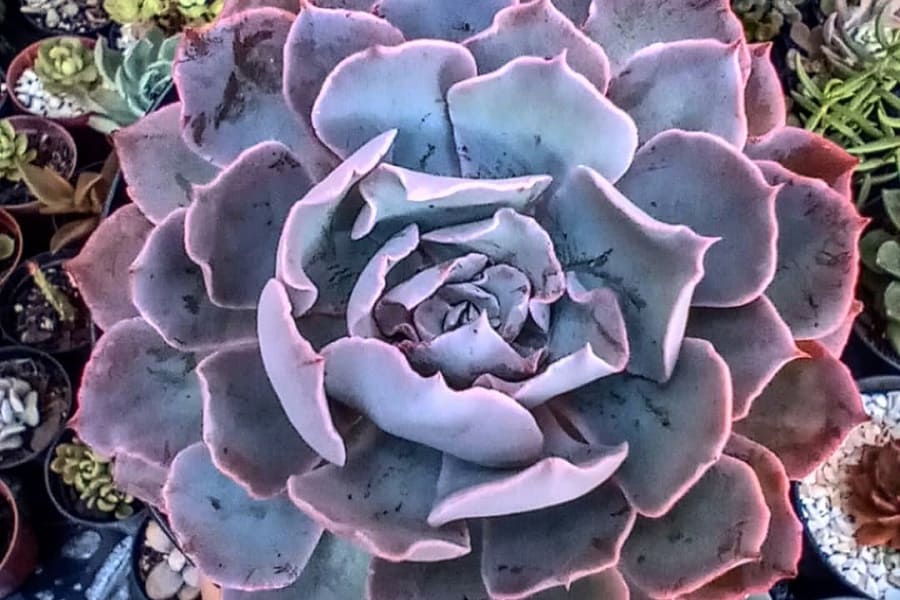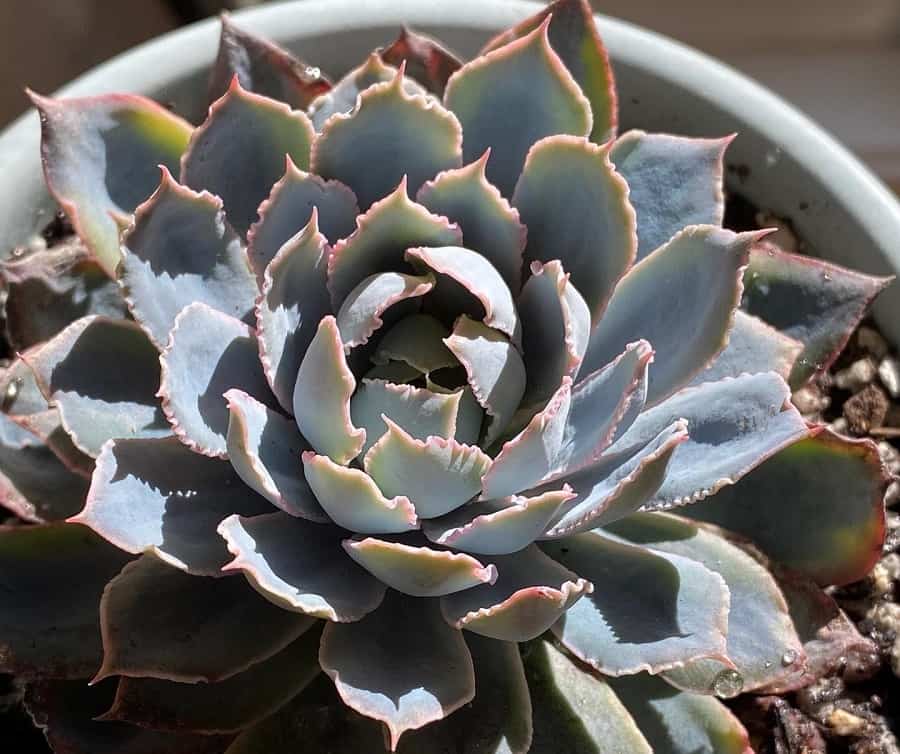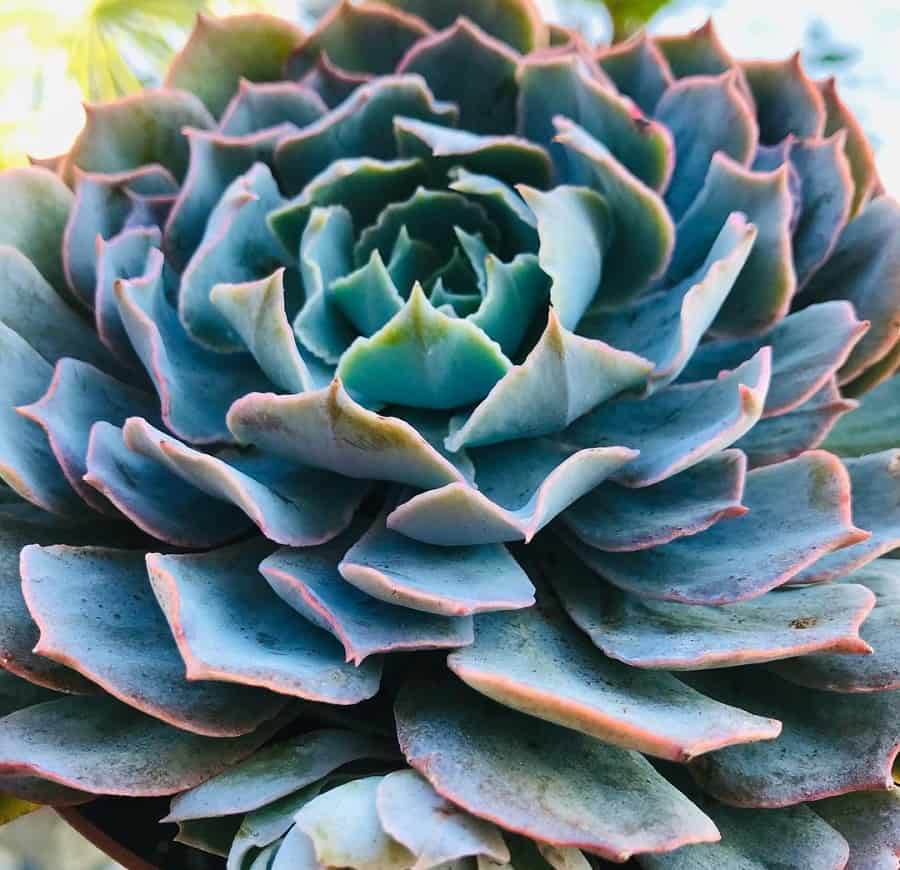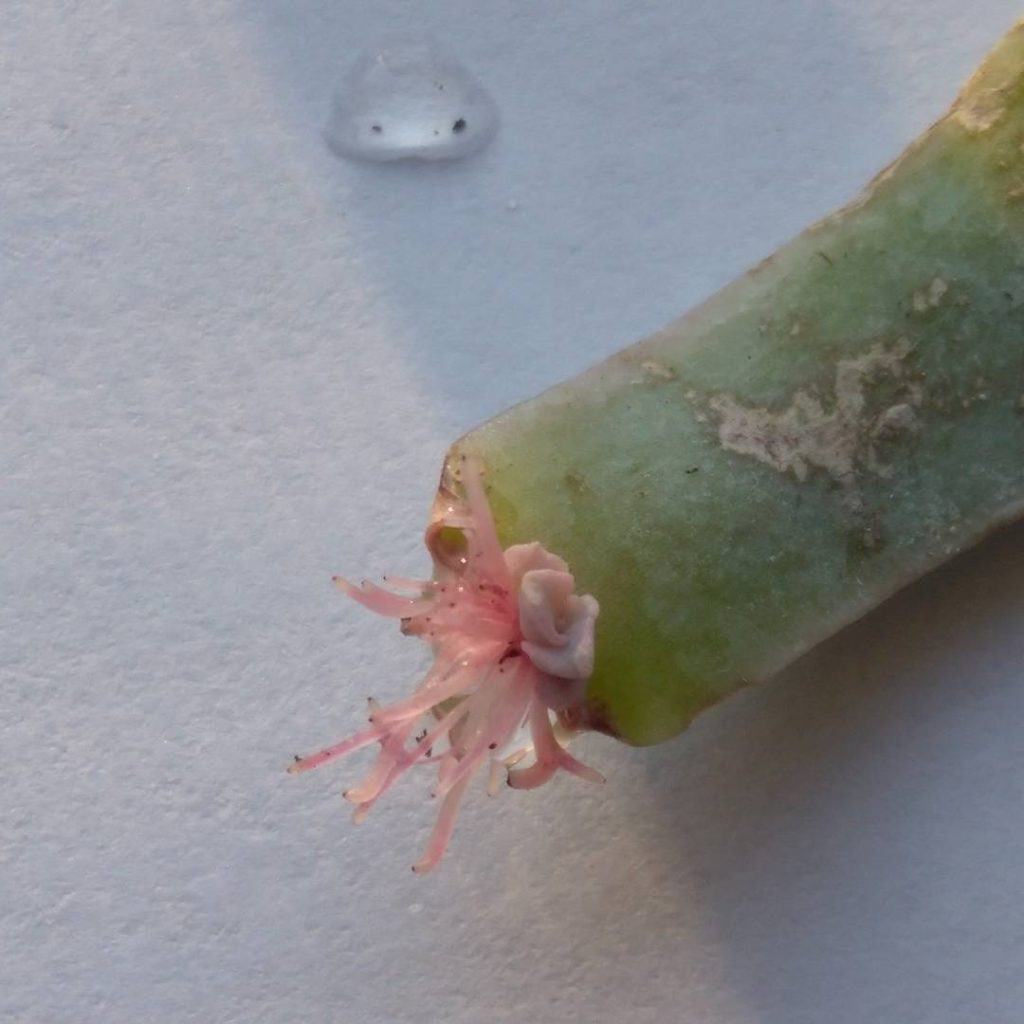Swoon Over Echeveria Blue Heron’s Wavy Iceberg Leaves
Are you ready to fall head over heels for one of the most stunningly sculptural succulents around? Introducing the jaw-droppingly beautiful Echeveria Blue Heron. With its frosty blue, undulating leaves that seem to defy gravity, this succulent masterpiece is sure to have you swooning. And just wait until you see the irresistible pink glow that radiates from within those chiseled waves – it’s enough to send any plant lover into a tizzy! If you haven’t already added this icy dream boat to your succulent collection, get ready to be utterly mesmerized.

Contents
About Echeveria Blue Heron
The Echeveria Blue Heron is a hybrid succulent that stuns with its distinctive wavy, blue-tinted leaves arranged in an elegant rosette pattern. The fleshy leaves have a captivating pink blush that seems to emanate from within. When mature, tall flowering stalks emerge with delicate blooms. This variety grows up to 6-8 inches (15-20 cm) tall and 10-12 inches (25-30 cm) wide, making it an eye-catching addition to any indoor or outdoor succulent garden.
Check this out:
160+ Amazing Echeveria Types with Pictures
Echeveria Blue Heron Care Guide
Light
To keep the Echeveria Blue Heron looking its stunning best, provide bright, direct light for at least 6 hours per day. Outdoor conditions in summer are ideal. Indoors, situate it near a sunny, south or west-facing window. Insufficient light will cause legginess and prevent flowering. However, avoid intense afternoon sun which can lead to sunburn. If lighting is very low, consider using a grow light about 6-12 inches (15-30 cm) above the plant for 12-16 hours per day.

Water
Like most succulents, the Echeveria Blue Heron stores water in its thick leaves and doesn’t need frequent watering. Only water when the soil is completely dry, then soak it thoroughly until water drains from the bottom. Signs of overwatering include wilting, wrinkling or dropping leaves. Err on the dry side, as this plant is quite drought tolerant but rots easily in wet conditions. In spring and summer, expect to water every 7-10 days. Reduce watering to once a month or less in winter.
Soil
This succulent needs a very well-draining soil mix to prevent issues with excess moisture. A cactus/succulent potting mix is ideal, or amend a standard potting mix with 50% perlite or coarse sand. Ensure the pot has ample drainage holes to allow the soil to dry out quickly.
Fertilizer
Feed the Echeveria Blue Heron every 2-3 weeks during spring and summer with a diluted cactus/succulent fertilizer or balanced liquid fertilizer at 1/4 strength. Avoid fertilizing in winter.
Temperature and Humidity
The ideal temperature range for this Echeveria is 65-80°F (18-27°C) from spring through fall. In winter, it prefers cooler temps around 50-65°F (10-18°C). Avoid freezing temps. It does best with average indoor humidity levels around 40-50%.

Pests and Problems
Issues like rot, leaf loss or shriveling are typically caused by improper watering. This succulent is also susceptible to common houseplant pests like mealybugs and scale if the conditions are too humid. Use an insecticidal soap or neem oil to treat infestations.
Pruning
The naturally sculpted form of Echeveria Blue Heron means minimal pruning is needed beyond removing any dead, damaged or diseased leaves or stems. Use sharp, sterile scissors or pruners.
Potting and Repotting
Choose a container slightly larger than the root system with drainage holes. Repot every 2-3 years in spring using a fresh cactus/succulent potting mix.
Echeveria Blue Heron Propagation Methods
One of the best ways to expand your Echeveria Blue Heron collection is through propagation. This variety can be easily propagated from leaf cuttings, stem cuttings or seeds.
Leaf Cuttings:
- Gently twist and pull a mature, healthy leaf from the mother plant
- Allow the leaf cutting to callous over for 3-5 days before planting
- Lay the calloused leaf on top of well-draining cactus/succulent soil
- Use a toothpick or two to anchor the leaf in place
- Water sparingly when the soil is completely dry
- In a few weeks, roots and a tiny rosette will sprout from the leaf

Stem Cuttings:
- Use a sharp, sterile knife to cut off a short stem segment from the main plant
- Allow the cut end to callous over for 3-5 days
- Plant the calloused cutting vertically in well-draining soil
- Water sparingly after roots have developed
Seeds:
- Sow fresh Echeveria Blue Heron seeds on the surface of a damp cactus/seed starting mix
- Cover the seed tray with plastic wrap to maintain moisture
- Remove wrap once seeds sprout in 2-4 weeks
- Transplant seedlings once they have a few sets of mature leaves
With a little patience, any of these propagation methods will reward you with plenty of new Echeveria Blue Heron plants to admire!
